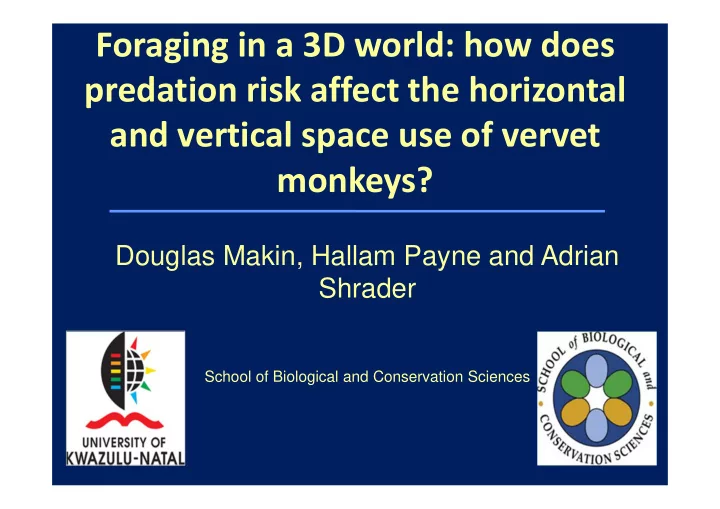

Foraging in a 3D world: how does predation risk affect the horizontal and vertical space use of vervet monkeys? Douglas Makin, Hallam Payne and Adrian Shrader School of Biological and Conservation Sciences
Aim Determine how vervet monkeys view their environment in terms of perceived predation risk
Predictions � Lower predation risk under the tree canopy and at the base of trees � Predation risk will increase with distance away from the tree � Predation risk will increase with height
Methods Seven GUD patches were placed along each transect 1 2 3 4 5 6 7 30 Meters
Results 70 Tree Ground 60 Mean GUD (g) 50 40 30 F 6,1401 = 82, p < 0.001 20 1 2 3 4 5 6 7 PATCH
Results 90 80 70 Mean GUD (g) 60 50 40 30 20 10 F 12,1401 = 2.5, p < 0.001 0 1 2 3 4 5 6 7 PATCH Troop A Troop B Troop C
Discussion � Prefer to feed in trees below the canopy as well as at the tree base � Vervets do not forage uniformly across landscapes � Landscape of fear is driven by both aerial and terrestrial predators
References Cheney, D. L., and Seyfarth, R. M. 1990. How Monkeys See The World. University of Chicago Press, Chicago. Laundre, J.W., Hernandez, L., and Altendorf, K.B. 2001. Wolves, elk, and bison: re-establishing the “landscape of fear” in Yellowstone National Park, USA. Canadian Journal of Zoology 79, 1401- 1409.
Recommend
More recommend